Attention! Apple vs Pear
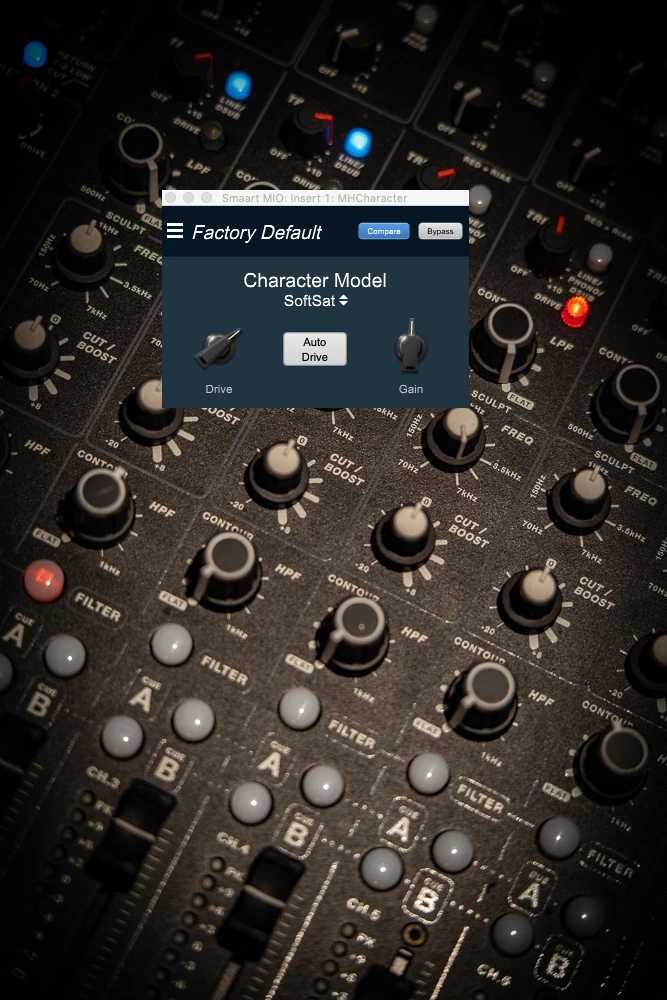
Actually, I just wanted to buy a tape machine quickly...but stupidly, the door is too narrow. My dear friend Johannes then said “try the saturation of Model 1”. So from pure boredom I compare a PLAYdifferently Model 1 DJ mixer with saturation function in the channel train with the Metric Halo ULN8 MIO 3D SoftSat function. I like to use the latter for mastering in the absence of the tape machine mentioned in the introduction. The "taming" of transient peaks without destroying the entire dynamic is a core task in the final touch of music production. A halfway valid comparison, so I had to determine is not so easy. However, the work presented here is suitable for publication and I do not want to withhold it from you. Have fun reading and listening.
Side note
Actually, I wanted to throw a third candidate into the race, a pair of Telefunken W695 EQs that bring a certain magic into the game even in the bypass. Unfortunately, I decided against it in the absence of a valid level structure. The Model 1 was again not spontaneously able to provide the specified output level without switching too much THD in series. Another source with the required “steam” was just not “anymore” available.
First of all, it should be noted that this is not a ‘shoot out’ where a winner is sought. This would not be possible in the shortened presentation. Due to the functional differences of the underlying variants, I basically compare apples with pears. Please keep this in mind when reading. I am writing this contribution to the amusement of the people, not to conduct esoteric fundamental debates.
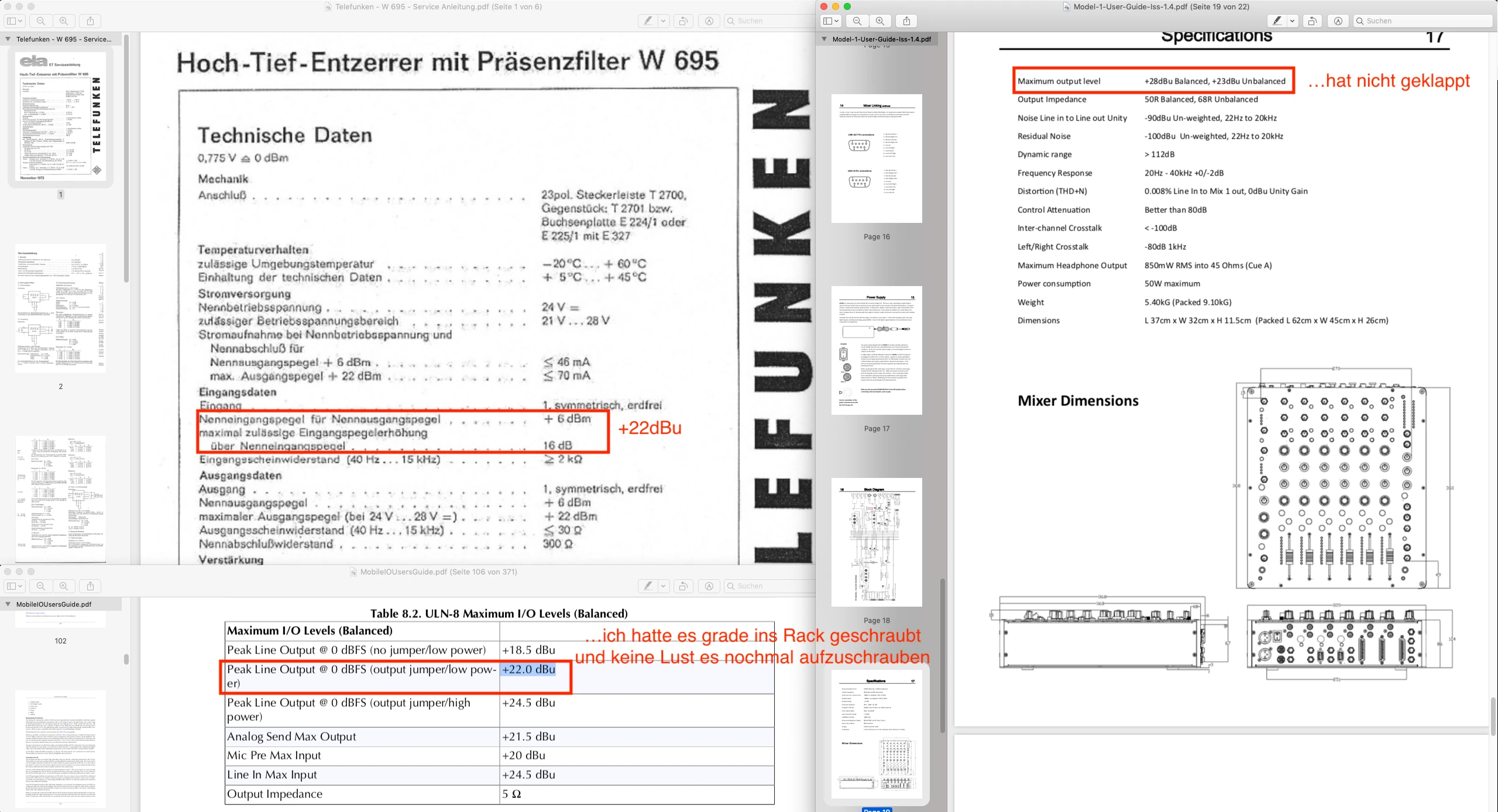
approach
- Creation of a valid level structure suitable for comparison.
- Measuring inspection and fine adjustment
- Processing of an unmastered rough mix
- Timeallignemt of comparison files
- RMS Normalization of comparison files by hand
- Zero test of the edited files with the reference
- Export of comparison files
- ABX Blind Test of Comparison Files (RMS Normalized Version)
- ABX Blind Test of Comparison Files (Peak Normalized Version)
- ABX Blind Test of Comparison Files (Peak Normalized Version Manual Aural Level Adjustment)
Measuring inspection and fine adjustment
After a few back-and-forth attempts, I initially decided on a rough direction for the amount of distortion. For this purpose, I played music alternately over both chains and chose the portion of THD according to hearing, which on the one hand clearly shows what happens, on the other hand does not really destroy anything. If it were a real mastering, however, the selected control would be clearly above it! ...but hey, we also want to hear roughly something via the Internet.
Then I used the transfer function of the PLAYdifferently Model 1 DJ Mixer as a reference and adjusted the playback distance of the MIO SoftSat function to it.
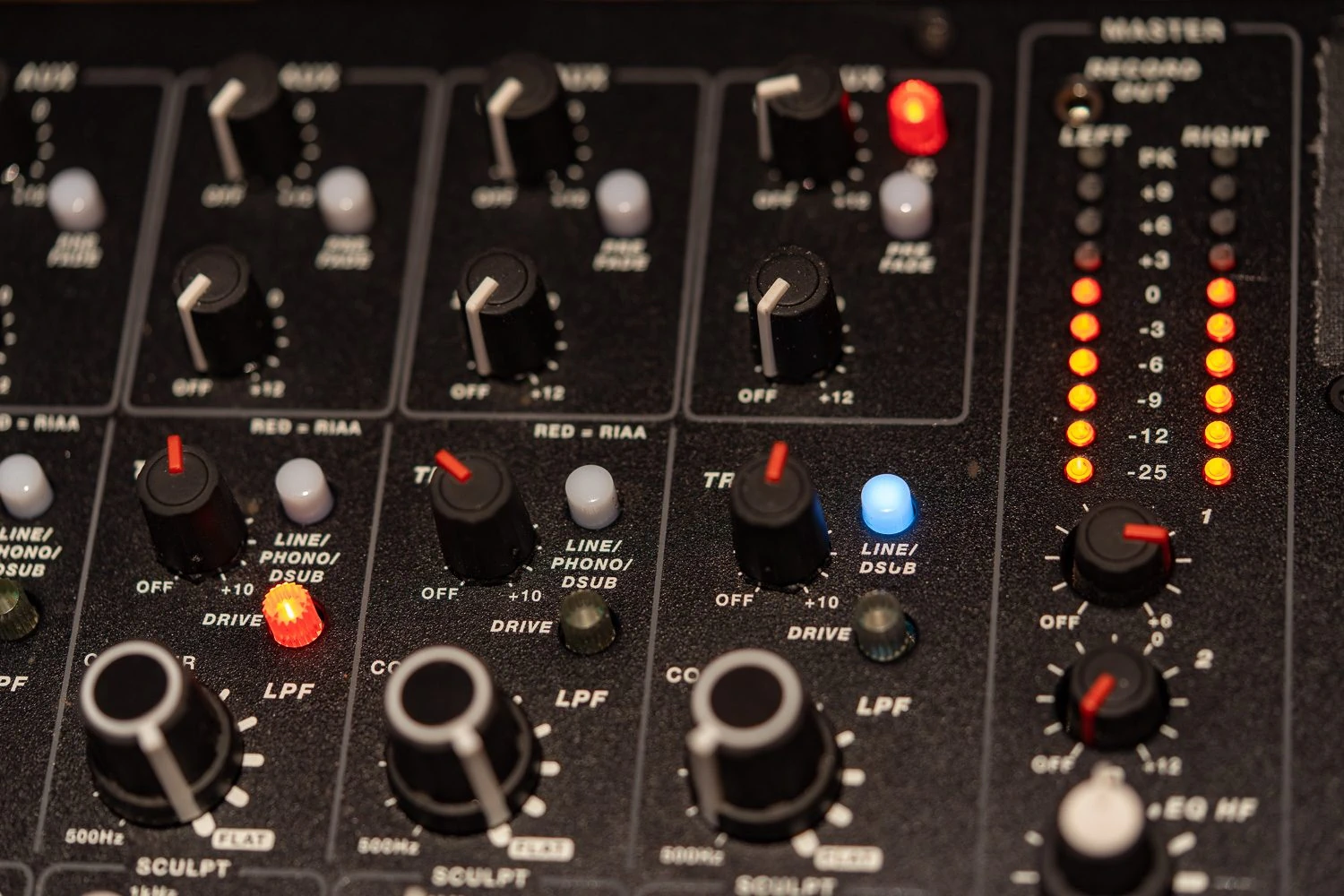
Channel Saturation and Master Out Level.
Note: relatively useless without knowledge of absolute input level ⁇
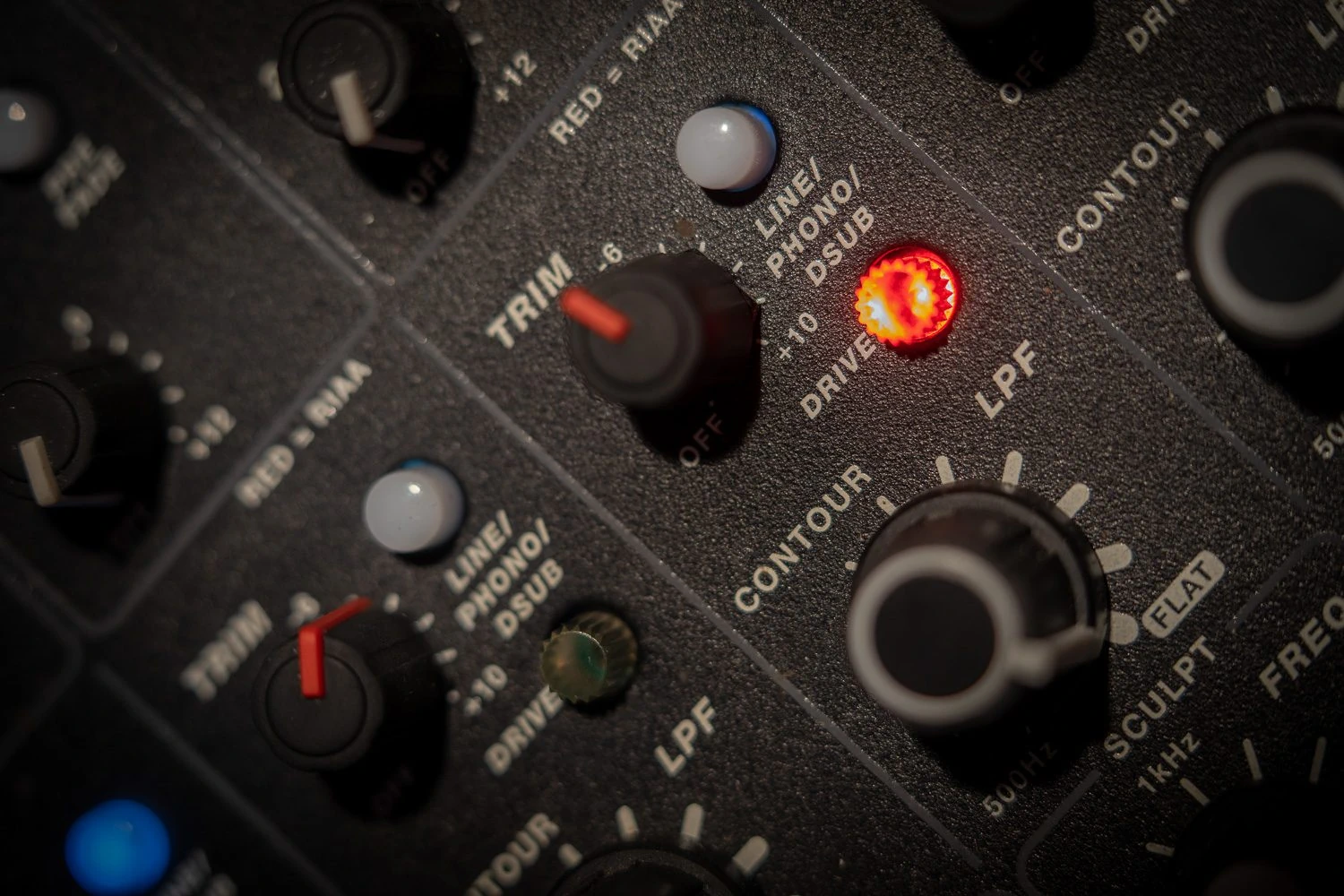
Channel saturation detail

Channel level
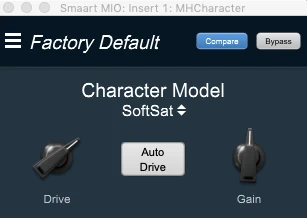
Note: As we're about to see, we're not going to be 1:1 comparable, but since it's my personal favorite, I'll take this one too!


Of course, the level adjustment alone is not sufficient. At the amplitude frequency response, it can already be seen that most of it takes place on the time axis. A meaningful presentation is not possible with Smaart. In addition, pink noise is completely unsuitable as it does not contain transient peaks. In the next step, I switch the generator to 100Hz sine and take the Model 1 in the spectrogram for reference. I match the Mio SoftSat with the drive controller. Then it goes back to the transfer function with pink noise and by means of gain control of the SoftSat plug-in back to match. Then check again in the spectroramm with 100Hz and then check with music. The whole thing takes place about 10 times in a row until I am half satisfied.

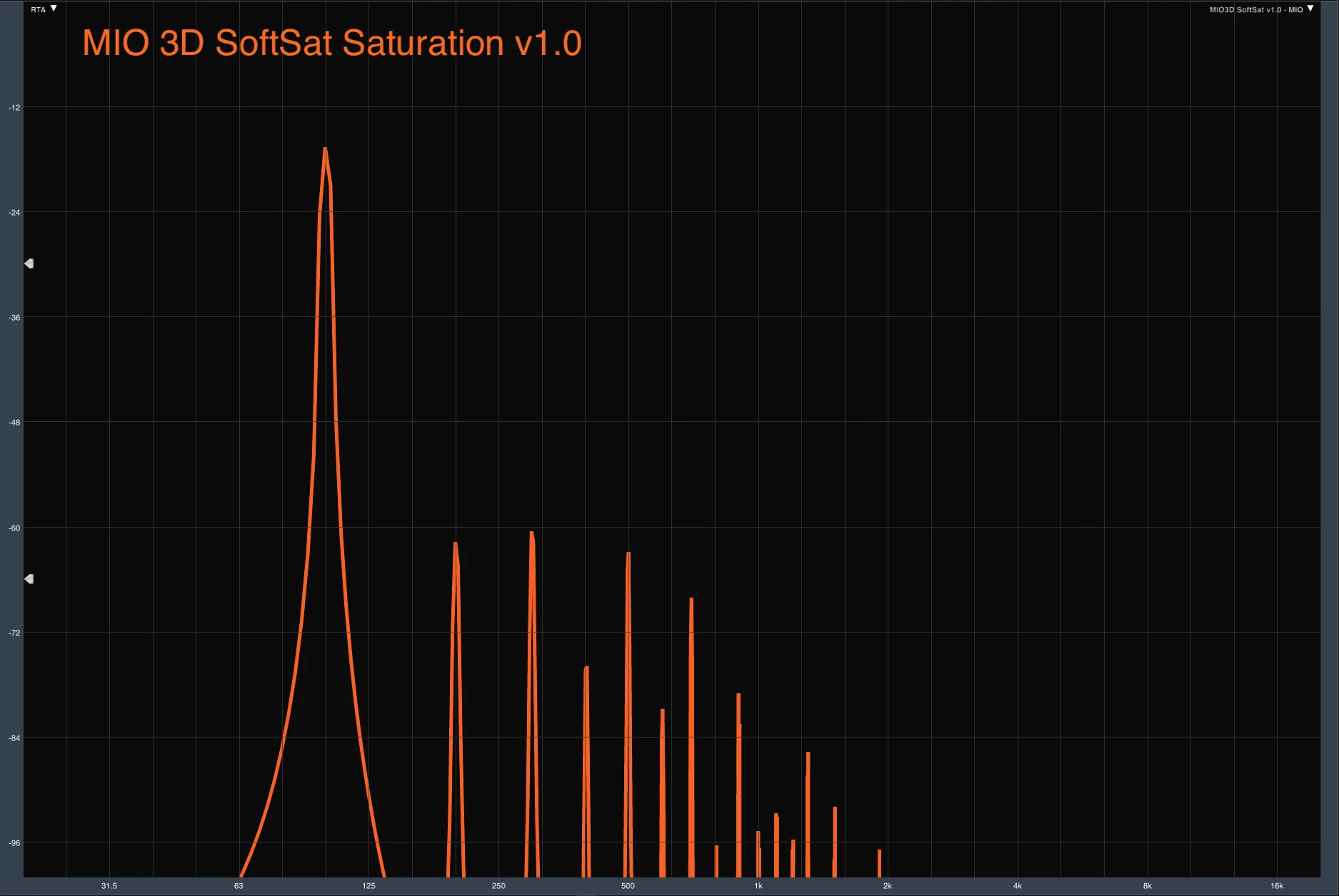
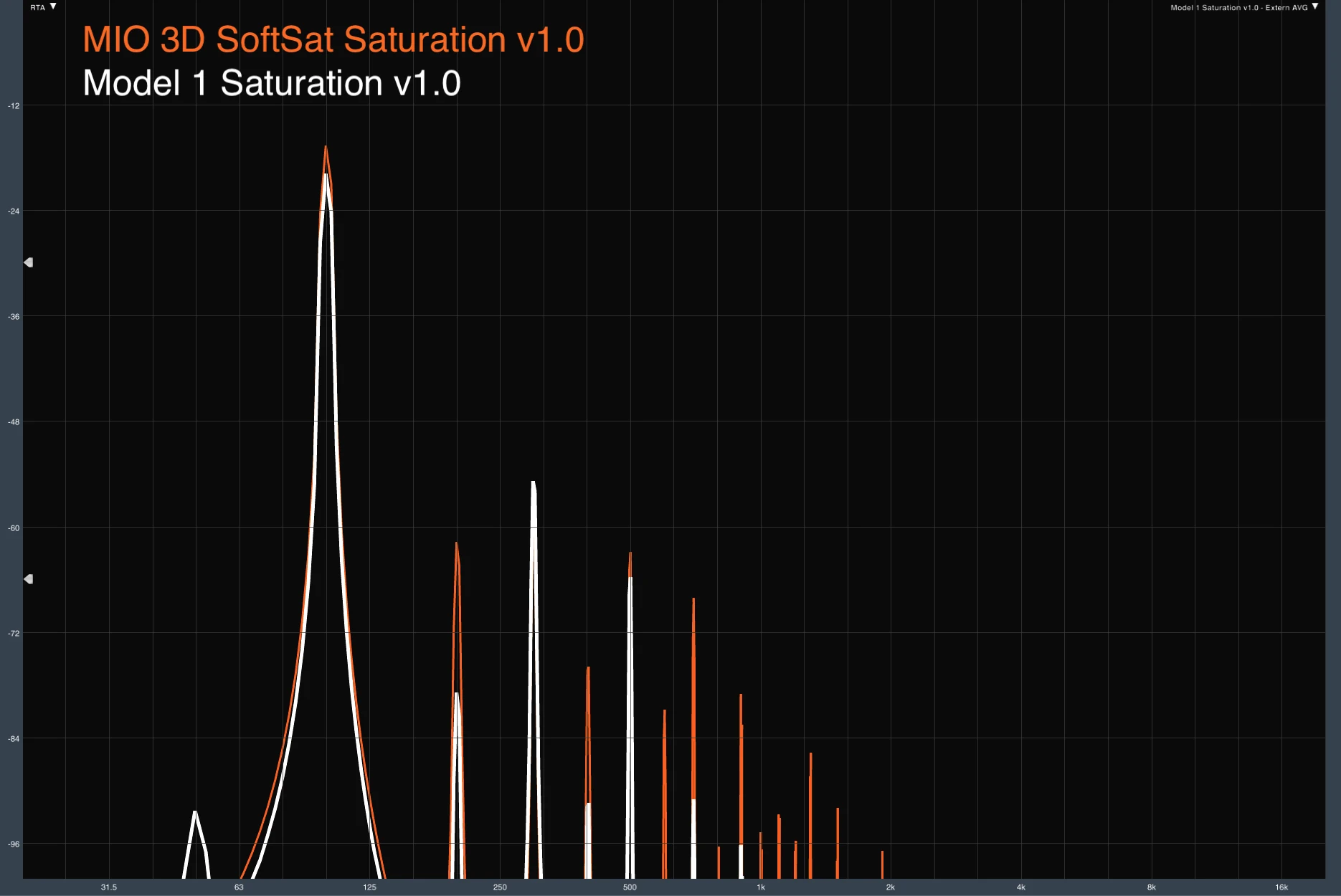
Processing of an unmastered rough mix
Next I need an unmastered rough mix on which I also have the rights so that I can provide you with the sound examples. If you don't like the music, you've been unlucky for a while :-). If you need something similar for your own examples, you are welcome to use the title.
The track is now routed parallel through both matched chains and recorded in Logic. Subsequently, the different latency times have to be compensated and the levels have to be set to the RMS values in order to be sound-assessed afterwards. The goal is to make them appear as loud as possible.
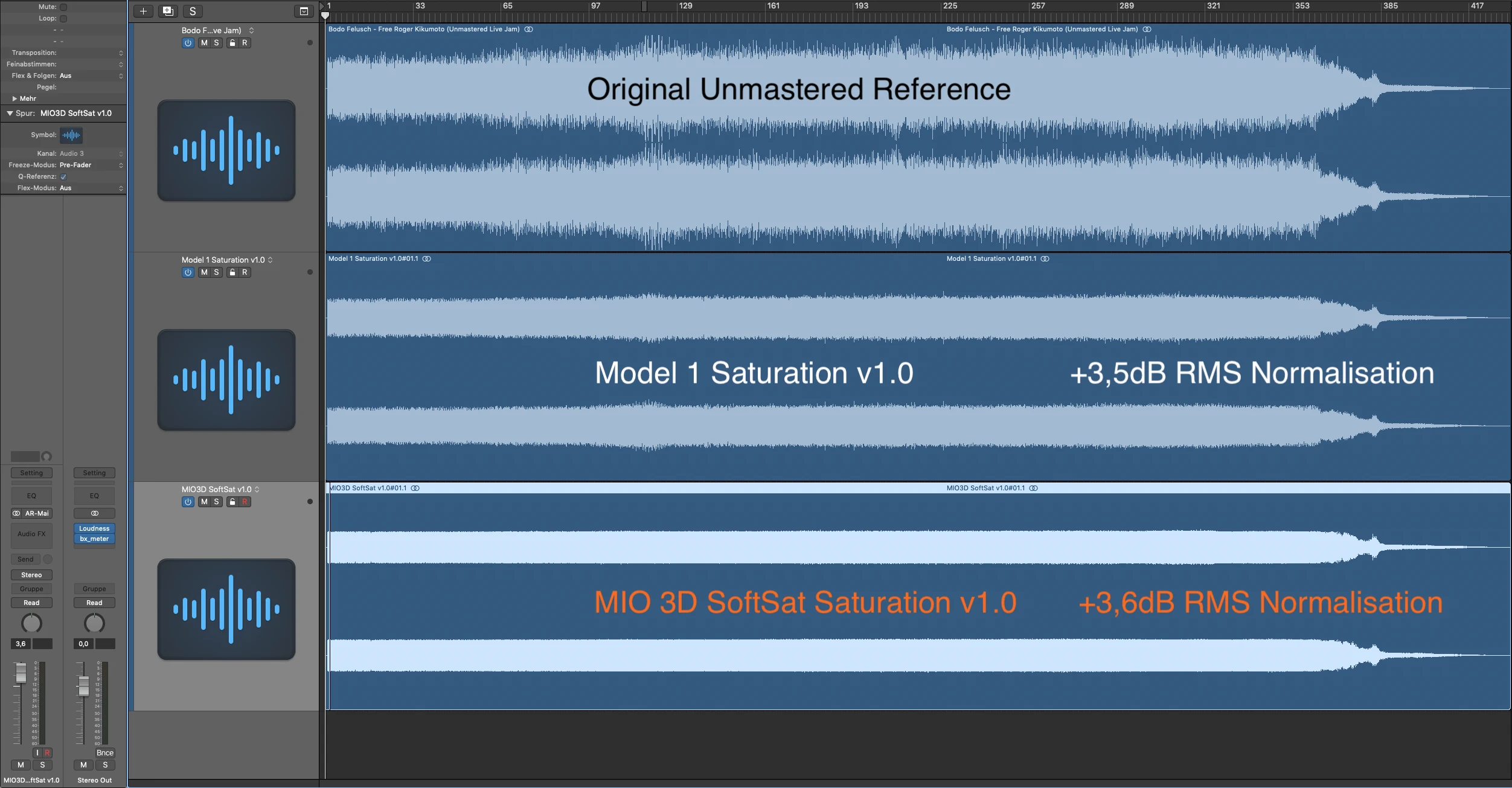

...with differently distorted transients not 100% possible
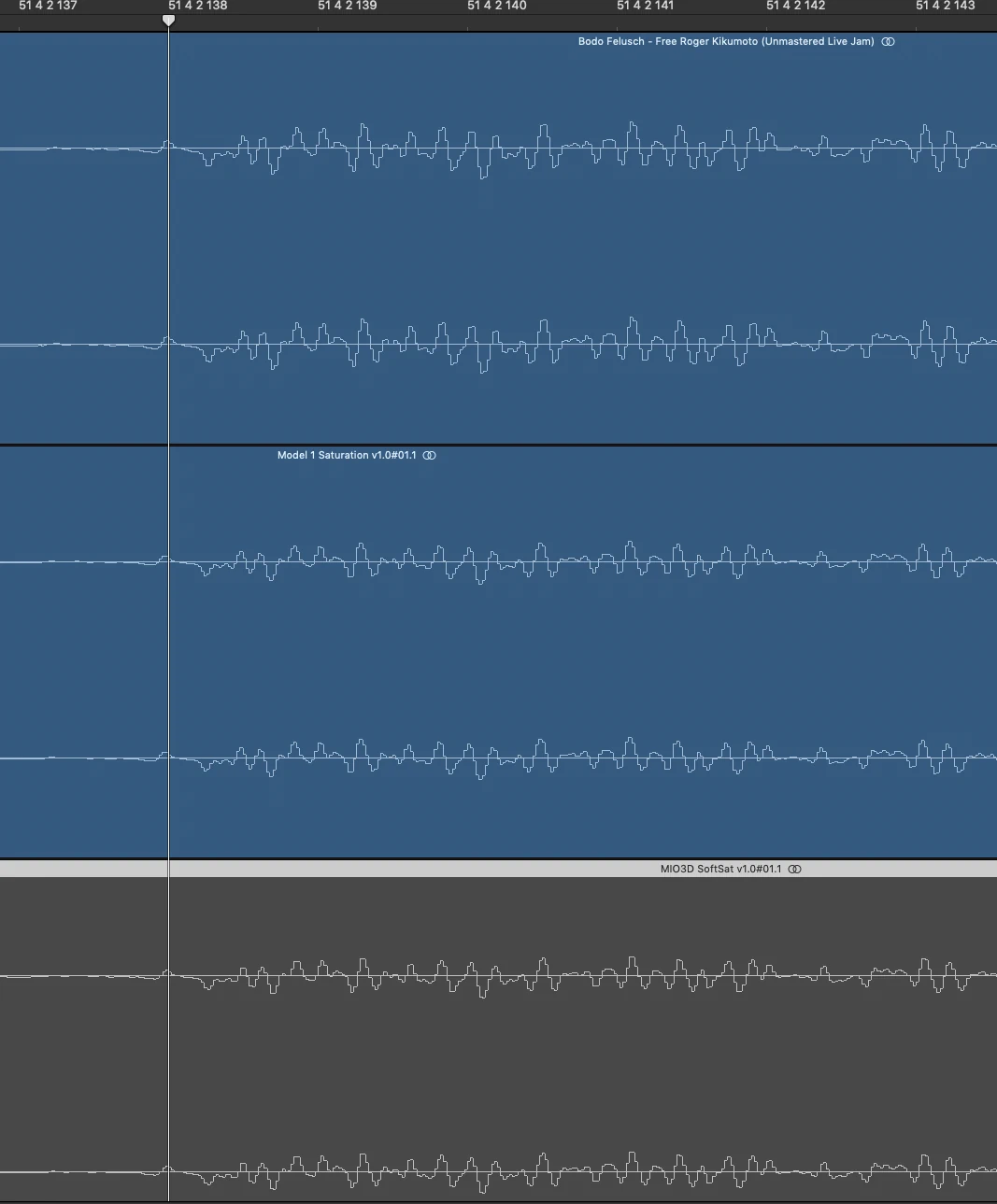

Peak = 0dB
LUfs = -14,5dB
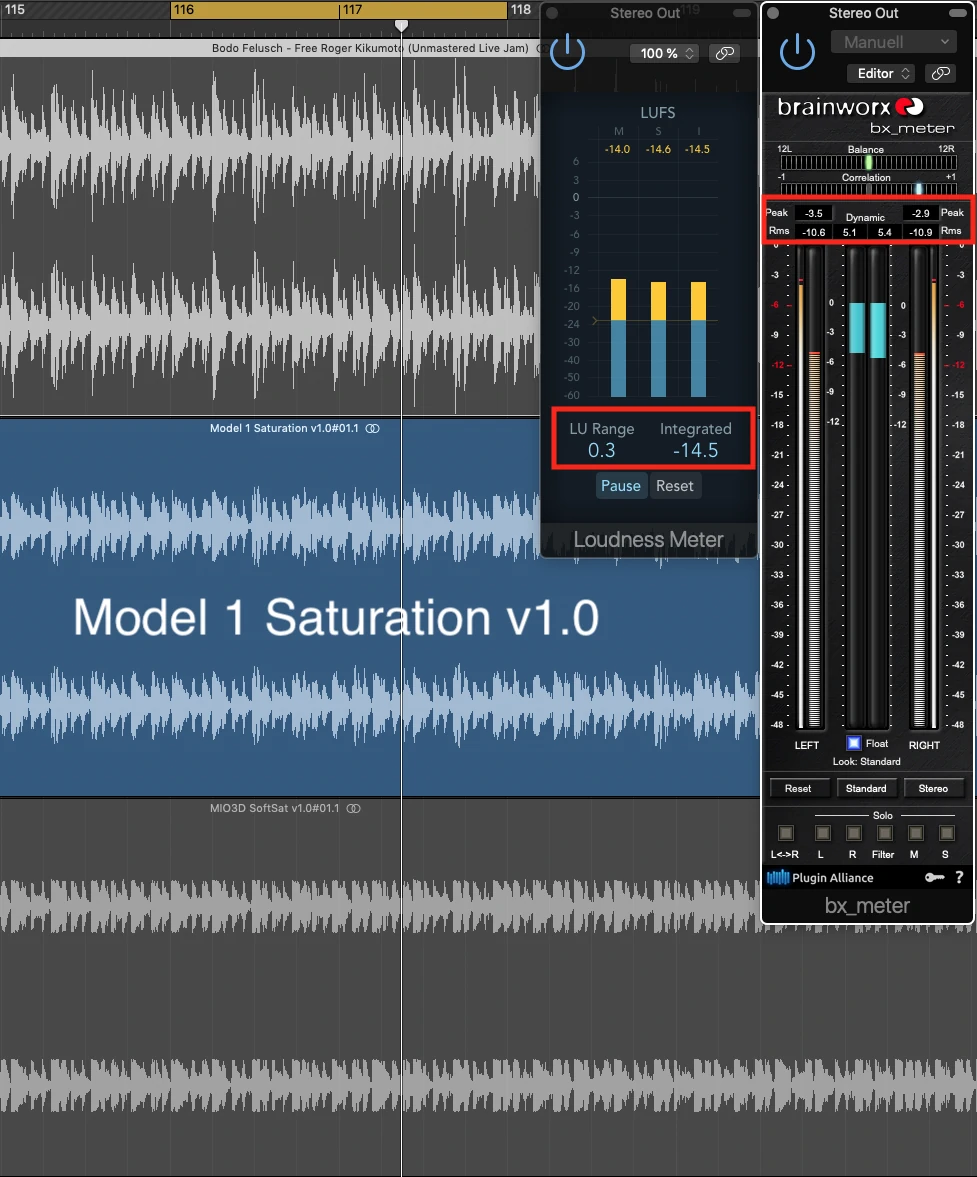
Peak = -3dB
LUfs = -14,5dB
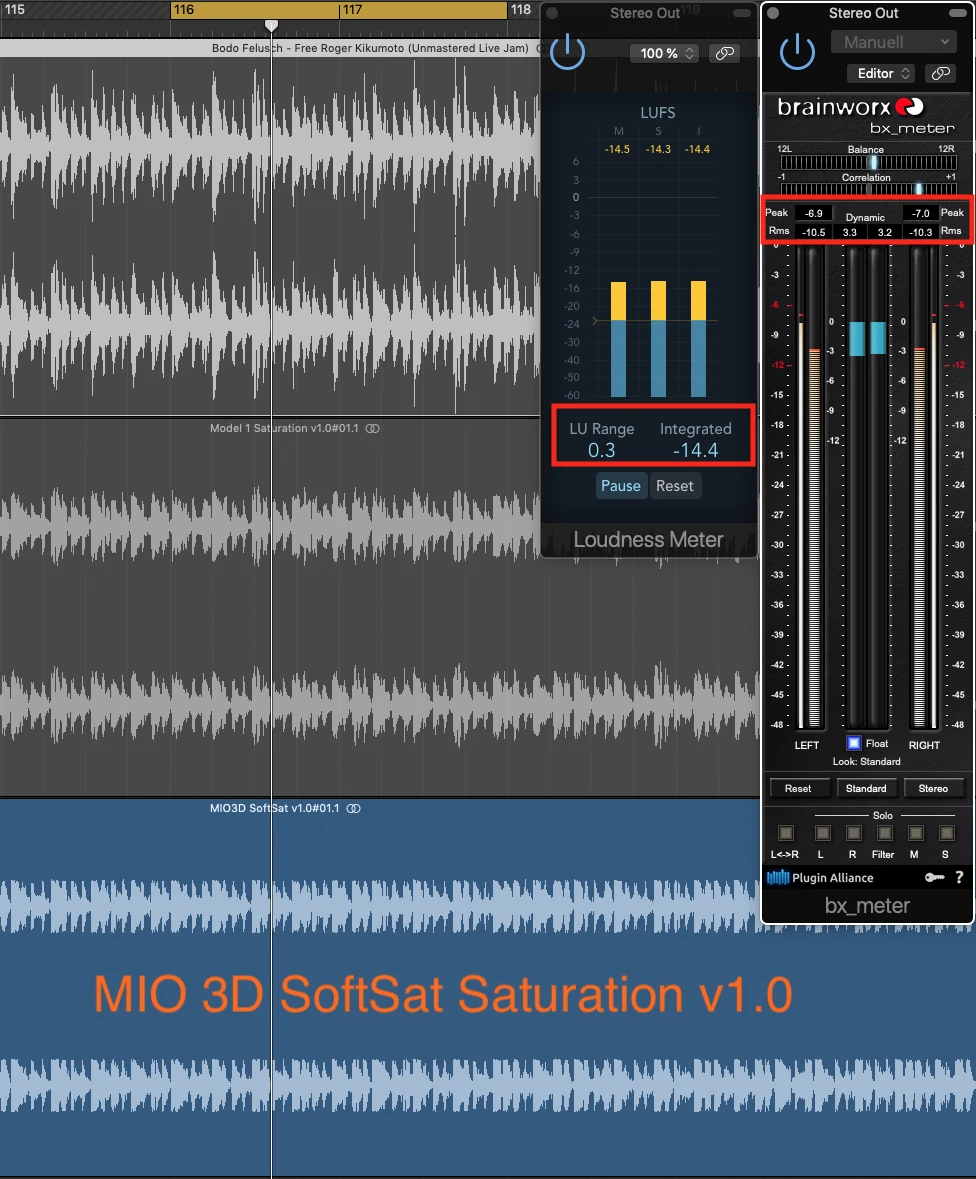
Peak = -7dB
LUfs = -14,4dB
After the comparison, all 3 files sound reasonably conclusive to each other and should be comparable. In the back of my mind I did not compare the two versions as mentioned in the introduction and rather represent two independent versions according to personal taste with a Schippe Drive that is too big in reality. Nevertheless, I had to set up the comparison in such a way that it provides reasonably comparable results. Spontaneously, I think the MIO variant would have to be fine-tuned again. However, since this process took several hours, I decide to leave it at that because I foresee that otherwise it will go back and forth 5x and not necessarily get better ... apples and pears taste different. This is followed by export. I have three packages for this.
- 1:1, i.e. RMS normalized in Logic
- Peak normalized
- Zero test variants
The finished files can now be tasted blinded.
ABX blindest of results

First, the variants normalized in Logic RMS against the original. I do ten passes and decide at different positions in the track for the one that suits me best. I judge the subjective volume as equal and do not feel the need to tackle the gains.
6x original
3x MIO
1x Model 1
Note: This process is not representative because I perform 10 attempts at randomly selected times in the track. Since the alternative, a short loop, would only apply to this part, I decide to distribute the procedure 10 attempts statistically.

Next, the peak normalized variants against the original. I do ten passes and decide at different positions in the track for the one that suits me best. Which, of course, is as expected nonsense, since the loudest wins.
10x MIO
0x Original
0x Model 1
Note: This process is only documented for the sake of completeness, because I want to know how much loudness can be gained or how many transient peaks have been sniffed away.

Next, as before, the Peak normalized variants against the original. This time, however, with a hearing adjustment of the gains. I do ten passes and decide at different positions in the track for the one that suits me best.
6xOriginal
2x MIO
2x Model 1
Note: Please keep in mind that the 10 selected comparison times were different from those in Hearing Attempt 1. The tendency, however, testifies that the attempt is valid. In addition, my gut feeling is confirmed, which has led me over the past 20 years from time to time to master several versions differently hard and intro / outro as well as middle part cut out and reassemble. When I listen to great productions, I think there are colleagues who do the same. On the other hand, if I listen to flat-iron loudness scrap, I usually can't make it through the intro ⁇
Finally, something on your ears!
Here is the 3-pack of original and manually normalized version in Logic RMS.
Here is the 3 pack of original and peak normalized version.
Here the two zero test results RMS normalized against the original.
conclusion
Well, that's what happens when you just fly over the article. There is no conclusion!
I can't just compare apples to pears and then say “the pear tastes better” in the end, it depends on how ripe the pear is and whether the apple is an Elstar. Since you didn't read the article and probably pressed directly on Play ...yes, that's right ...what got hot ...that was intended ⁇
But I can get rid of a general conclusion in the form of a personal opinion! First, the Metric Halo Character Simulation is just awesome! Secondly, the saturation function in the Model 1 is also horny in a DJ console for live acts or hybrid setups! It is calibrated in such a way that, with an intuitive gain setting until about 3 p.m., it drives increasingly into saturation and is until then ideally suited to get live drums fat without losing the live character, every software compressor must fail! From 3 p.m. it behaves like an additional overdrive switch and the 303 is just waiting to scream. Apropros waiting...where is my tape machine?
FREE DOWNLOAD
If you want the unmastered rough mix, you can download it for free at Bandcamp:
